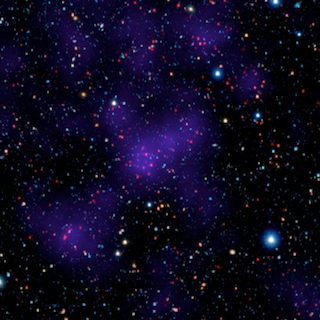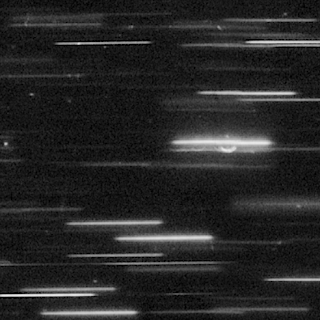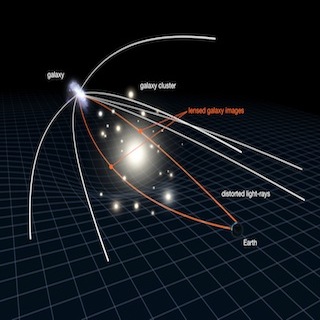Dr. Ivelina MomchevaAssociate Research Scientist
Yale University
Department of Astronomy
My work focuses on galaxy evolution. I am interested in how environment affects galaxy evolution, particularly in groups and high-redshift proto-clusters. I get my thrills from gravitational lenses and spectra. I am the project manager for the Hubble Treasury Program 3D-HST.
resume
I am currently an associate research scientist at the Yale University Department of Astronomy, working with the 3D-HST survey. Previously, I was a postdoc at the Carnegie Observatories in Pasadena and a graduate student at University of Arizona. Highlights from my CV are listed below and the complete pdf version is available for download.
Research Interests
Galaxy evolution and star-formation as a function of environment
Formation and evolution of groups and clusters of galaxies
Gravitational lensing, environments of gravitational lenses
Employment
2011-Now Associate Research Scientist/Postdoctoral Researcher
Department of Astronomy, Yale University, New Haven, CT
2009-2011 Postdoctoral Researcher
Carnegie Observatories, The Carnegie Institution, Pasadena, CA
2004-2009 Research & Teaching Assistant
Department of Astronomy, University of Arizona, Tucson, AZ, USA
Education
2009 Doctor of Philosophy in Astronomy
Department of Astronomy, University of Arizona, Tucson, AZ, USA
2002 Bachelor of Science in Physics
Majors in Astronomy and Optics & spectroscopy
Sofia University "St. Kliment Ohridski", Sofia, Bulgaria
Teaching and Outreach
Planetarium Presenter at Leitner Family Observatory & Planetarium
Astro on Tap invited speaker, NYC & New Haven
Yuri's Night @ Yale Organizer
TEDxBulgaria 2013 invited speaker
Project-ASTRO trained astronomer
publications
I have contributed to >40 refereed publications. As part of 3D-HST, I have been closely involved in the wide range of research topics pursued by the team: the evolution of Milky Way progenitors, of the star forming sequence, of the structural properties of galaxies since z ∼ 2.5, the build up of disks, the discovery of the most distant galaxy-galaxy lens and the discovery of z ∼ 10 candidates, to name a few. Listed below are articles where I have had a significant contribution. For my full list of publications, please visit the ADS Library or download the PDF below.
Momcheva, I., Williams, K. A., Cool, R. J., Keeton, C. R., Zabludoff, A.I., “A Spectroscopic Survey of the Fields of 28 Strong Gravitational Lenses: The Redshift Catalog”, accepted to ApJS, arXiv:1503.02074
Prescott, M. K. M., Momcheva, I., Brammer, G. B., Fynbo, J. P. U., Moller, P., ”Overturning the Case for Gravitational Powering in the Prototypical Cooling Lyman-alpha Nebula”, 2015, ArXiv e-prints , arXiv:1501.05312, accepted
Skelton, R. E., Whitaker, K. E., Momcheva, I., Brammer, G. B., van Dokkum, P. G., Labbe, I., Franx, M., van der Wel, A., Bezanson, R., Da Cunha, E., Fumagalli, M., Foerster Schreiber, N., Kriek, M., Leja, J., Lundgren, B. F., Magee, D., Marchesini, D., Maseda, M. V., Nelson, E. J., Oesch, P., Pacifici, C., Patel, S. G., Price, S., Rix, H.-W., Tal, T., Wake, D. A., Wuyts, S., ”3D-HST WFC3-selected Photometric Catalogs in the Five CANDELS/3D-HST Fields: Photometry, Photometric Redshifts and Stellar Masses”, 2014, ApJS, 214, 49
Wong, K. C., Tran, K.-V. H., Suyu, S. H., Momcheva, I., Brammer, G. B., Brodwin, M., Gonzalez, A. H., Halkola, A., Kacprzak, G. G., Koekemoer, A. M., Papovich, C. J., Rudnick, G. H., ”Discovery of a Strong Lensing Galaxy Embedded in a Cluster at z = 1.62”, 2014, ApJL, 789, L31
Leja, J., van Dokkum, P. G., Momcheva, I., Brammer, G., Skelton, R. E., Whitaker, K. E., Andrews, B. H., Franx, M., Kriek, M., van der Wel, A., Bezanson, R., Conroy, C., Forster Schreiber, N., Nelson, E., Patel, S. G., ”Exploring the Chemical Link between Local Ellipticals and Their High-redshift Progenitors”, 2013, ApJL, 778, L24
van Dokkum, P., Brammer, G., Momcheva, I., Skelton, R. E., Whitaker, K. E., for the 3D-HST team, ”3D- HST Data Release v3.0: Extremely Deep Spectra in the UDF and WFC3 Mosaics in the 3D-HST/CANDELS Fields”, 2013, ArXiv e-prints, arXiv:1305.2140
Momcheva, I., Lee, J. C., Ly, C., Salim, S., Dale, D. A., Ouchi, M., Finn, R., Ono, Y., ”Nebular Attenuation in Hα-selected Star-forming Galaxies at z = 0.8 from the NewHα Survey”, 2013, AJ, 145, 47
Nelson, E. J., van Dokkum, P. G., Momcheva, I., Brammer, G., Lundgren, B., Skelton, R. E., Whitaker, K. E., Da Cunha, E., Forster Schreiber, N., Franx, M., Fumagalli, M., Kriek, M., Labbe, I., Leja, J., Patel, S., Rix, H.-W., Schmidt, K. B., van der Wel, A., Wuyts, S., ”The Radial Distribution of Star Formation in Galaxies at z ∼ 1 from the 3D-HST Survey”, 2013, ApJL, 763, L16
Papovich, C., Momcheva, I., Willmer, C. N. A. et al., “A Spitzer-selected Galaxy Cluster at z = 1.62” , 2010, ApJ, 716, 1503
Momcheva, I., Williams, K. A., Keeton, C. R., Zabludoff, A.I., “A Spectroscopic Study of the Environ- ments of Gravitational Lens Galaxies” , 2006, ApJ, 641, 169
Williams, K. A., Momcheva, I. G., Keeton, C. R., Zabludoff, A.I., Lehar, J., “First Results from a Photometric Survey of Strong Gravitational Lens Environments”, 2006, ApJ, 646, 85
work
Click on the images below for more information on the projects I am involved in.
-
High Redshift Clusters

High Redshift Clusters
Galaxy clusters are the most massive gravitationally-bound structures in the Universe. The redshift evolution of the number densities of clusters, especially at z>1, provides strong constraints on the cosmic matter density and the equation of state. Furthermore, clusters are ideal laboratories for the studies of hierarchal galaxy formation and the build up of the red sequence. However, very few clusters have been spectroscopically confirmed at z~1.5. A new, unbiased method to discover such clusters is to identify them as over-densities of galaxies with red [3.6um]-[4.5um] Spitzer colors. Unlike other selections, this method is equally sensitive to star-forming and passive galaxies. The first such cluster was confirmed by Papovich et al. (2010). This cluster, IRC0218, has been the target of extensive ground- and space-based observations. I am working on new Hubble WFC3 observations of the cluster which will give us insights on the star formation and stellar build-up in this early, dense environment.
Wong et al., 2014; Lotz et al., 2013; Papovich et al., 2012; Rudnick et al., 2012; Tran et al., 2010; Papovich et al., 2010
A Carnegie press release on the cluster discovery.
Yale press release on the most distant gravitational lens galaxy.
3D-HST

3D-HST: A Spectroscopic Galaxy Evolution Survey with the Hubble
3D-HST is a near-infrared spectroscopic survey with the Hubble Space Telescope designed to study the physical processes that shape galaxies in the distant Universe. This Treasury program has been allocated 248 orbits of HST time and is surveying ~600 square arcminutes of well-studied extragalactic survey fields (AEGIS, COSMOS, GOODS-S, UKIDSS-UDS) with two orbits of primary WFC3/G141 (IR) grism coverage and two to four orbits with ACS/G800L (optical) coverage. When completed, 3D-HST would provide the critical third dimension - redshift - for some ~10,000 galaxies at z>1.
As the project manager for the 3D-HST survey, my responsibilities include: coordinating the work of the data reduction and analysis team, overseeing the software development and testing new modules, managing the central server, managing our web-presence, providing support for scientific research, organizing and delivering data releases and compiling accurate documentation.More details about 3D-HST can be found on the official page HERE.
Environments of Strong Gravitational Lenses

Environments of Strong Gravitational Lenses
Strong gravitational lenses occur when the light from a distant source (z>1) is bent from its original path of propagation by the gravitational field of a foreground object (z<1). Strong gravitational lenses ought to be able to provide important constraints for cosmology. This promise, however, has not been met, mainly because the lack of understanding of their large--scale environments has hindered their use. We have carried out a survey of the environments and lines of sight of 28 strong galaxy--mass lenses designed to address this issue. We study the frequency and the effect of groups associated with the lens galaxy as well as line of sight structure, and explore the correlations between the observed lens properties and external perturbations.
Momcheva et al., 2015, in review; Wong et al., 2011; Momcheva, 2009, PhD thesis; Momcheva et al., 2006; Williams et al., 2006.
downloads
Data from the 3D-HST Survey
The 3D-HST team has published three public data releases so far. The most recent release (version 4.1) contains images and catalogs in the five deep extragalactic fields: AEGIS, COSMOS, GOODS-N, GOODS-S and UDS. The data release is described in Skelton et al. (2014). The data is currently available for download from the 3D-HST website, while it is being migrated to the MAST archive.
Go to 3D-HST Data Page
Survey of the Environments of Strong Gravitational Lenses
As part of my thesis, I collaborated on a survey of the fields of 28 galaxy-mass strong gravitational lenses. The survey data was collected over 40 nights of 6.5m MMT and Magellan time, employing four different multi-object spectrographs. These observations yielded a redshift catalog of 9768 new and unique galaxy redshifts. 82.4% of the catalog redshifts are between z = 0.1 and z = 0.7, and the catalog median redshift is z = 0.36. The data from this survey can be used to study the lens environments and line-of-sight structures to gain a better understanding of the effects of large scale structure on lens statistics and lens-derived parameters. See Momcheva et al. (2015) for a detailed description of the survey and data.